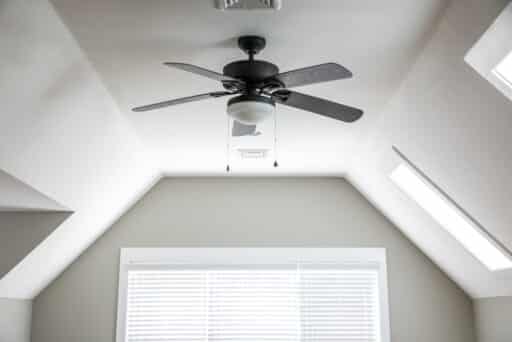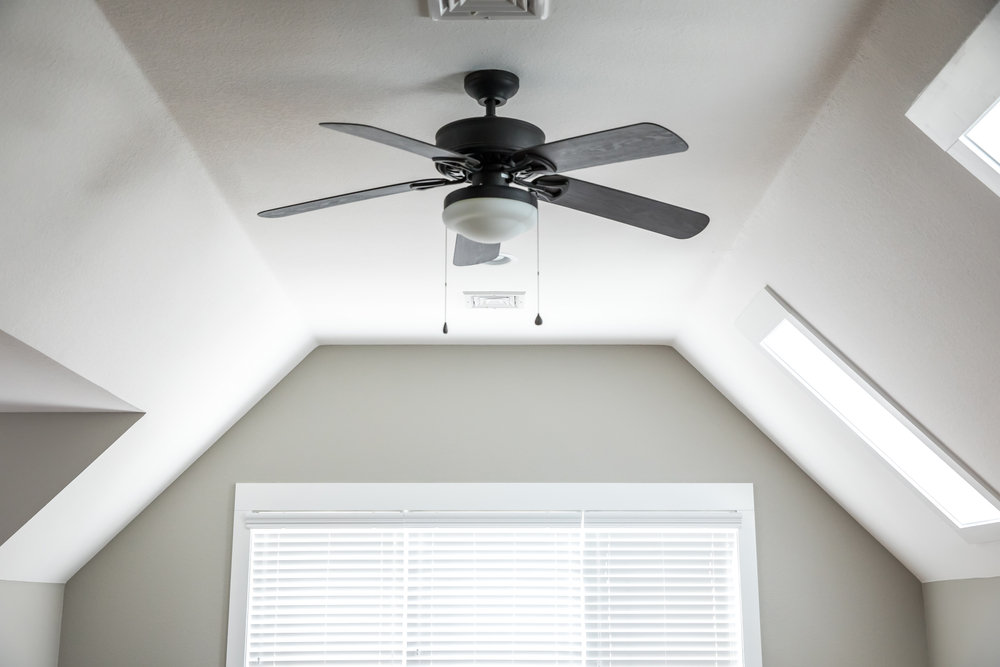Are you looking for ceiling fan alternatives to improve your sleep quality and health? Ceiling fans keep your home’s temperature low and offer a comfortable sleeping environment, but they can lead to many health concerns in the long term.
They are also difficult to clean and less powerful than pedestals or tower fans. Ceiling fans can spread dust, grime, and other allergens around your room, leading to breathing issues. They are also ineffective in keeping your room cool during hot summers.
Many people also do not prefer them as they make noise and disrupt their sleep. But there are a few alternatives to ceiling fans that will keep your room cool and help you have a relaxing sleep. From air conditioners to bladeless fans, you can use many cooling devices to stay cool and comfortable in summer.
You can select any of them depending on your budget, personal preference, and needs.
List of 5 Ceiling Fan Alternatives
Let’s look at the top 5 ceiling fan alternatives that deliver greater air circulation and consume less energy than traditional ceiling fans.
1. Air Conditioning
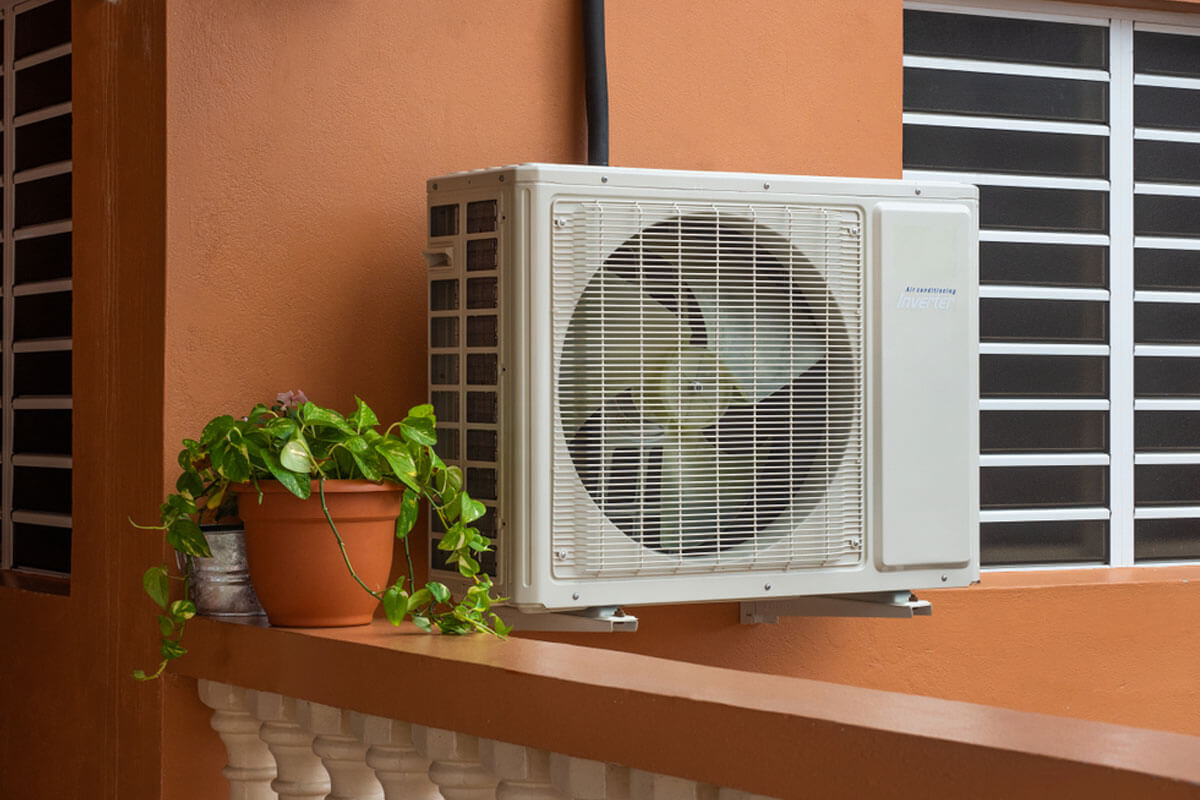
When the temperature starts warming, we look for ways to keep ourselves cool and comfortable. Air conditioners are excellent cooling devices that can be seen in most personal and corporate spaces. They pass room-temperature air through a compressor, which expels and extracts heat. After that, the cool air is blown out into the home with the help of the fan.
Air conditioners are a better option than traditional ceiling fans because they emit cooler air and take a few minutes to cool down your home. In larger areas, air conditioners work better than ceiling fans. They also remove moisture from the air and reduce humidity, allowing your body to dissipate heat more efficiently.
The best thing is that you can set the desired temperature in your room with the help of your air conditioner’s remote control. The only downside of using air conditioning is that it uses lots of energy, increasing your electricity bill.
There are different kinds of air conditioners that you can select depending on the square footage of your space and the humidity in your area.
Let’s take a look at the common ones.
- Central Air Conditioner: If you live in an area that remains warm all year, then a central air conditioner can be your best choice. The compressor is placed outside your house, and hidden ductwork blows in cool air so you won’t see any unattractive equipment inside your home. The main benefit of a central air conditioner is that you get even air distribution in all the areas of your room. But since it pushes cool air to different areas of your room, it consumes more electricity. You should only buy this air conditioner if you need to cool over five hundred square feet of space.
- Window Air Conditioner: With the help of window air conditioners, you can keep the temperature of a single room in a desired setting. Window air conditioners are easy to install and less expensive than central ones. They are energy-efficient and easy to install. Look for an Energy Star-certified window air conditioner to save money on electricity bills. Since they fit inside a window, window air conditioners don’t take up much square footage in your home. This can benefit those who want to cool a small room or live in a tiny house. Many window air conditioners also provide heating benefits, making them ideal for year-round use.
- Portable Air Conditioner: Portable air conditioners do not require permanent installation and can easily move from one room to another. They’re typically more affordable, smaller than central AC or window units, and perfect for cooling down small apartments or single rooms. Even if you have central air conditioning, certain spots in your home may need extra circulation or cooling. In that case, you can use portable air conditioners that easily cool down the desired areas. They provide targeted cooling rather than cooling the entire house. So if you’re working sitting on your office table, you can target the portable air conditioner towards the work area to get cool air.
2. Tower Fans
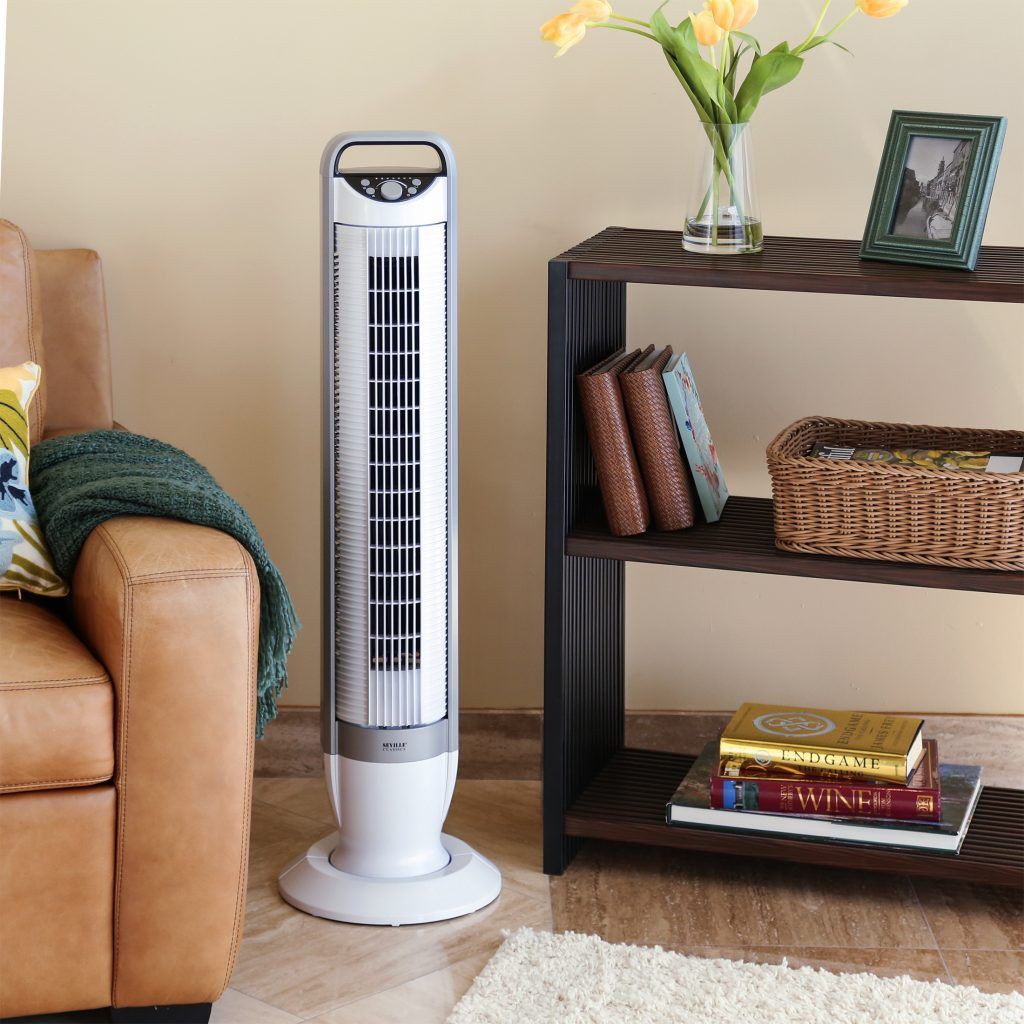
Are you looking for a cooling device to keep your home cool in the sweltering summer heat? If yes, you can opt for lightweight tower fans that fit into cramped spaces. Due to their sleek design, they circulate air from a single point in all directions, leading to a comfortable airflow in your room. Unlike traditional ceiling fans, most tower fans feature multiple speeds, an oscillating motion, and a powerful windstream.
You can easily transport tower fans from one room to another, unlike ceiling fans, which need to be installed in a single area. This allows you to enjoy the refreshing breeze in any home area without being confined to a single space.
They are also noticeably quieter than ceiling fans and have many amazing features. Some tower fans also come with HEPA filters and ionizers that are crucial in cleansing the air before it is blown out.
So, if you want cleaner air and a space-saving cooling solution, a tower fan can be your ideal choice.
3. Pedestal Fans
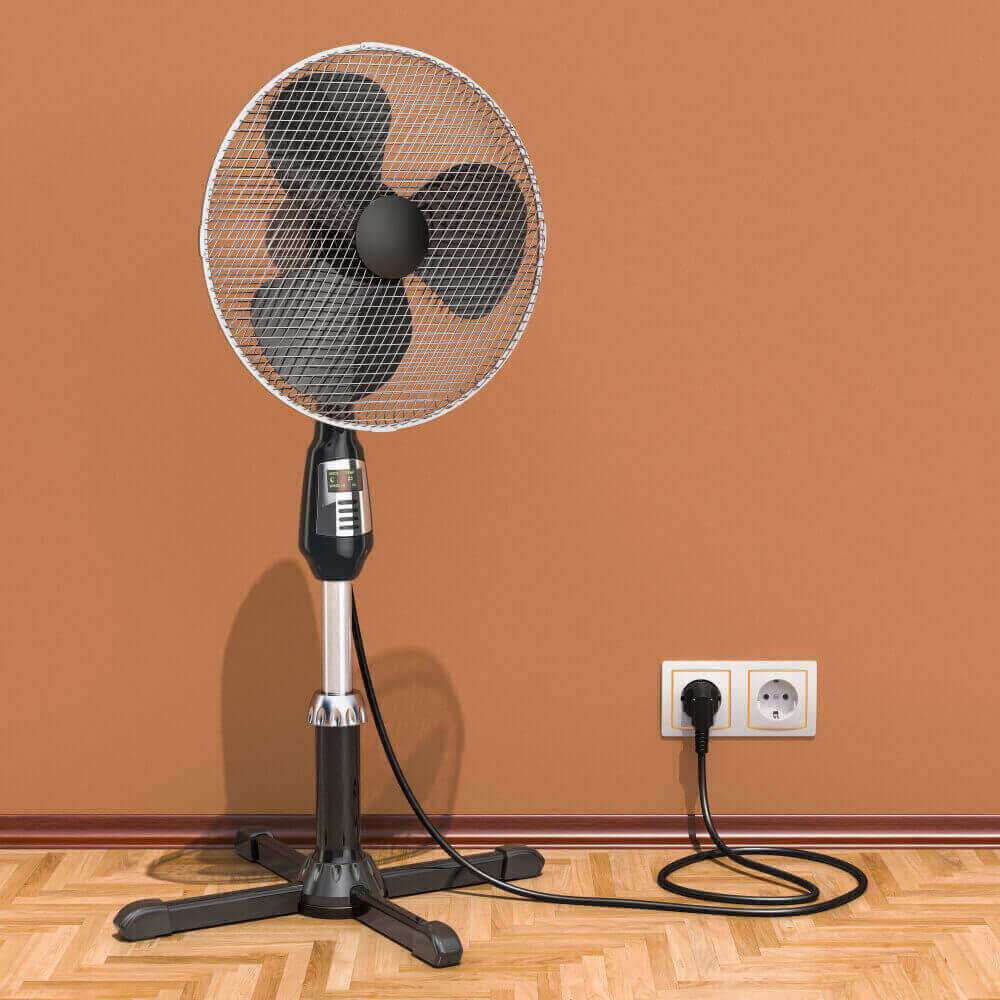
If you want relaxing air circulation inside your room in the sultry and hot summer season, pedestal fans can be your go-to choice. They are one of the best ceiling fan alternatives that come cheaply and can be moved wherever you want. An adjustable, tall stand characterizes them and typically has three blades. Unlike fixed cooling solutions like ceiling fans, pedestal fans can easily oscillate and swivel, directing airflow from different angles.
You can also target it to specific areas by adjusting its height and controlling the airflow intensity with the help of speed setting. Pedestal fans consume less energy and are much more affordable than ceiling fans. If energy efficiency and budget are important considerations, a pedestal fan can be a cost-effective option.
4. Box Fans

A box fan can be a valuable addition to any home or office space to stay cool during the scorching summers. Box fans are very energy efficient and can help you save money on your electricity bill. The best thing about this device is that it offers great flexibility, making it ideal to use in any area of your home. You can insert it into a window or put it on the floor, unlike the ceiling fans that don’t offer such flexibility. When buying a box fan, you must consider its size since this affects how much air it can circulate in your room.
You’ll find 21-inch and 20-inch box fans, most commonly in the market. They can be a great choice for cooling a 12-feet by 12-feet room. You can buy smaller 8-inch and 10-inch box fans to cool a small area.
If you want them to work optimally, keep them on the window to allow cool outside air to flow throughout the room. Box fans have knobs on the front or the top to control how powerfully the air moves. But it also comes with a few disadvantages, like it is bulky and doesn’t oscillate. While deciding between box and ceiling fans, you must consider your needs, budget, and personal preferences.
5. Evaporative Air Coolers

If you live in a low-humidity area, traditional ceiling fans might not cool down your space effectively. In that case, you can use evaporative air coolers that filter dry outside air and produce a cool breeze with the help of ice water. They are designed for dry climates and are among the best ceiling fan alternatives for those living in arid environments like deserts.
They do not have the power a window unit or portable AC might have, but they’re an affordable way to cool down your room when you have limited space and budget. Evaporative coolers are also more energy efficient than ceiling fans and have a lower environmental impact.
But one thing that you must remember while buying evaporative air coolers is that they require regular maintenance to perform optimally compared to ceiling fans that require little to no maintenance. If you don’t use your evaporative air cooler for a long time, empty and clean the reservoir. This is essential to avoid mildew and mold growth and keep your cooler functioning well.
Disadvantages of Sleeping with Ceiling Fan On
There are a few disadvantages of sleeping with the ceiling fan on.
- Poor Indoor Air Quality: If you live in an area with poor air quality, ceiling fans can worsen the situation. The rotating fan blades easily draw in pollutants and contaminants from outdoors, like fumes or smoke from nearby factories and engine exhaust.
- Congestion: Ceiling fans dry out your throat, nose, and mouth while you sleep as they gather dust and circulate allergens in the room. Using a ceiling fan frequently can lead to a sore, itchy throat, watery eyes, runny nose, difficulty breathing, headache, and sneezing. If you’re suffering from respiratory conditions like asthma, ceiling fans can cause even more congestion to you. Dust and allergens instantly circulate through the air, triggering asthma attacks and allergies.
- Creates noise: Old ceiling fans are noisy and can disrupt your sleep. With time, the likelihood of fan noise increases even more. Even if you buy expensive fans, they will start creating noise after some time. So, if you’re looking for a cooling device with a noise-free operation, ceiling fans may not be a good choice for you.
- Dehydration and Dry Skin: Ceiling fans can dry out your sinuses and mouth, leading to dehydration. During winter, if you use ceiling fans, your skin can dry.
- Difficulty cleaning the blades: It is important to clean ceiling fans regularly to ensure they don’t accumulate dirt and grime. But since they are mostly installed on high ceilings, it can be difficult to clean them.
Conclusion
Whether you’re making presentations in your home office, taking a nap in your bedroom, hosting virtual meetings from your room, or enjoying your meals in your dining room, the right cooling device can make a lot of difference.
While a ceiling fan is a great way to keep your room cool, it can be difficult to clean and creates lots of noise, disrupting your sleep. It may also fail to work if your area’s temperature is very high. In that case, you can consider other options like air conditioning and evaporative air coolers to maintain a cool and comfortable environment in your home.
If you’re looking for ceiling fan alternatives to beat the summer heat, you can check out the abovementioned options. They are easy to use and work with your home decor.
While choosing them, keep in mind your budget, the square footage of your home, and your needs.
Frequently Asked Questions
What are the Best Ceiling Fan Alternatives to Keep Your Room Cool?
Many ceiling fan alternatives, like box fans and pedestal fans, can help you maintain an ideal temperature in your home. You can also use central air conditioning if you want all areas of your home to stay cool. In low-humidity areas, evaporative air coolers can be the best option to beat the heat.
How Can You Minimize the Bad Effects of Sleeping with The Ceiling Fan On?
Clean the fan blades regularly and keep your home clean to minimize the bad effects of sleeping with the ceiling fan on. There should also be at least six feet between your face and your ceiling fan. You can also place a bowl of water in your room to remove symptoms of dehydration and dry skin.

